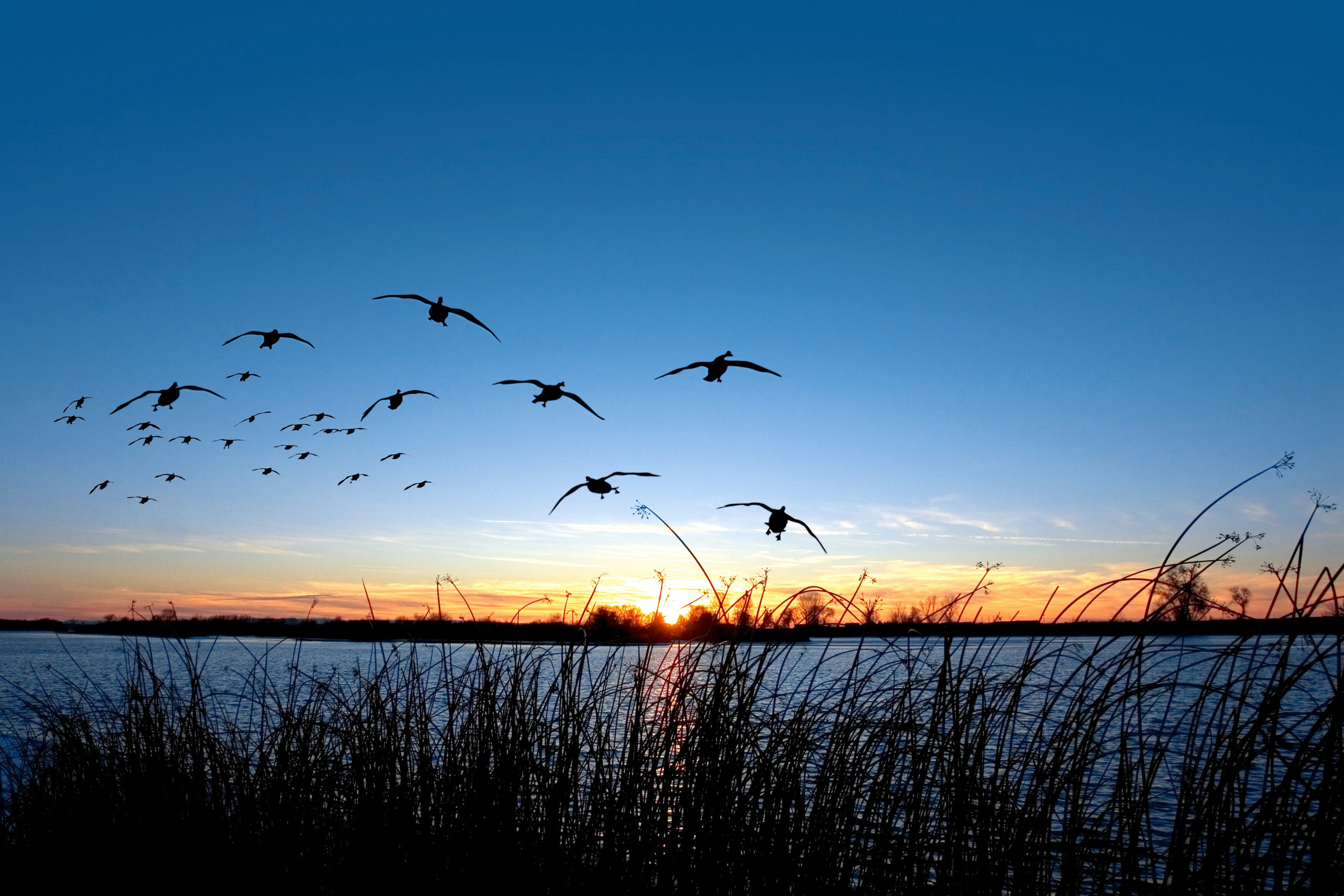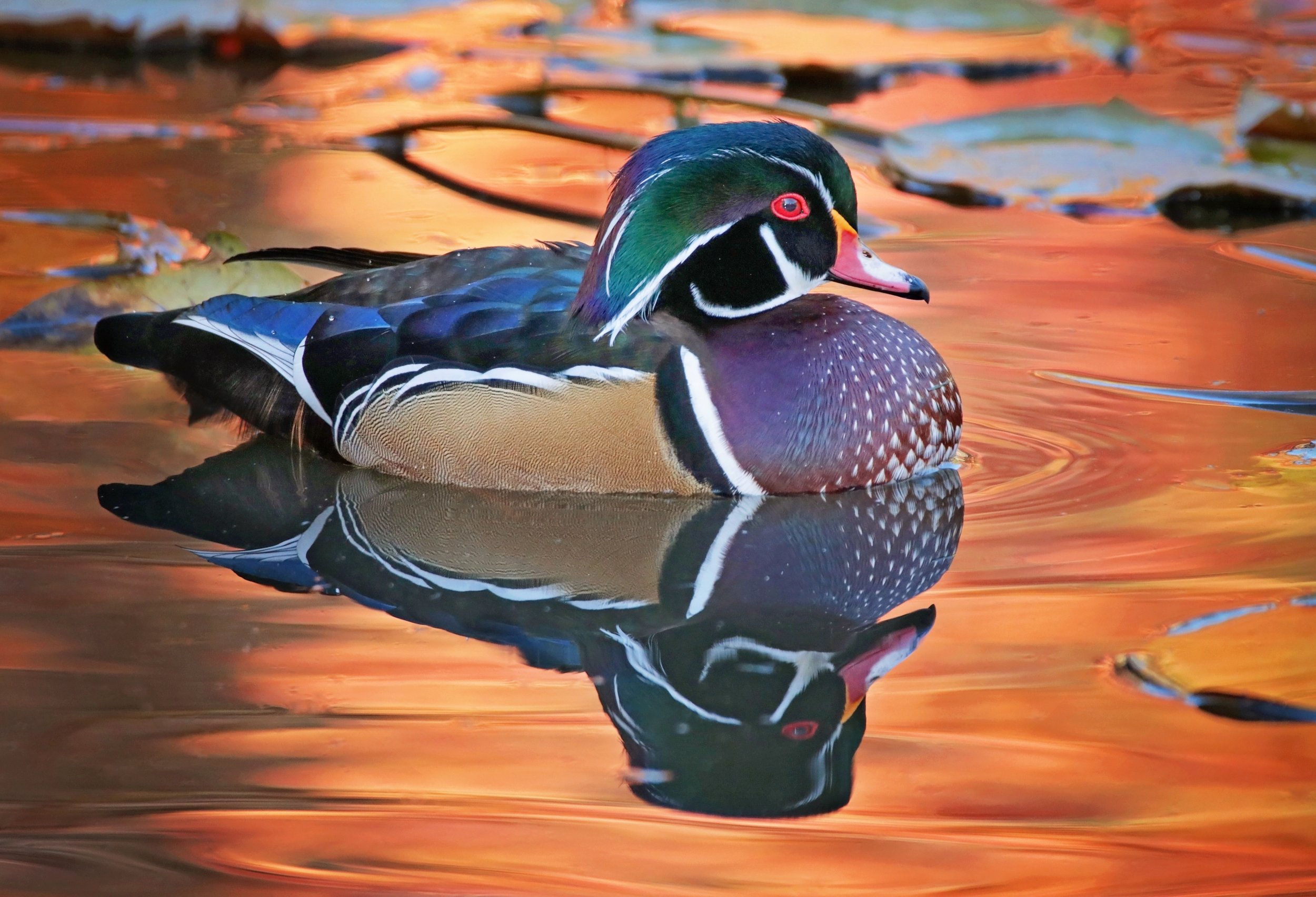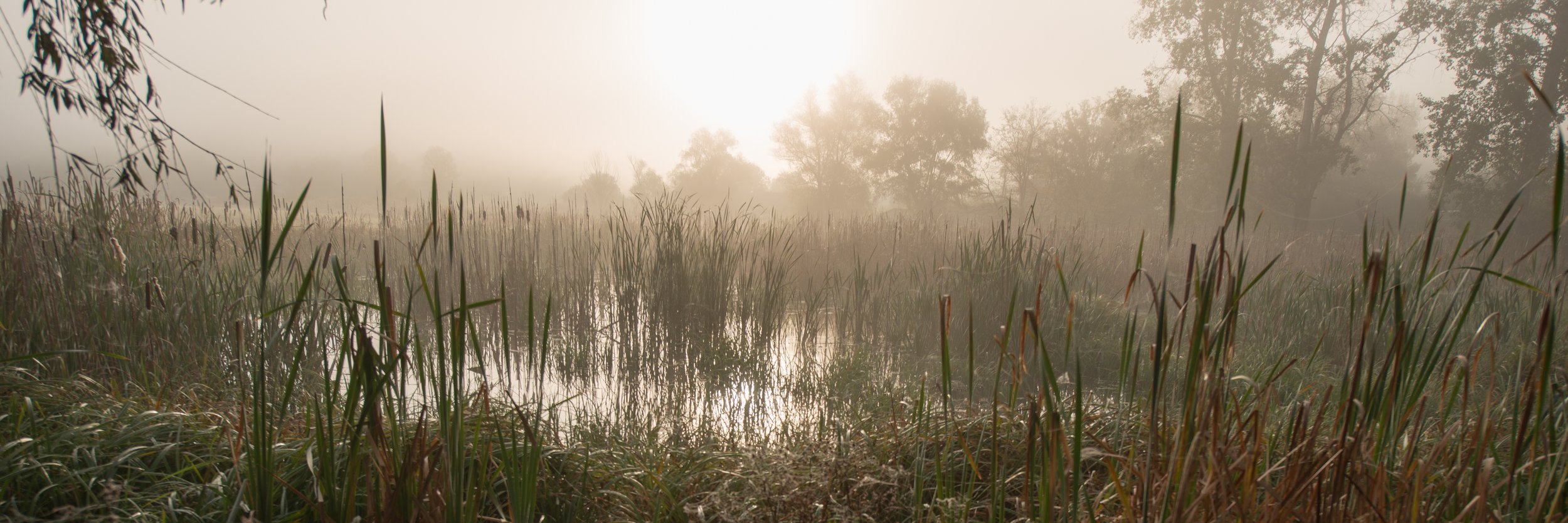
Waterfowl Initiatives
Project. Wood Duck Sanctuary
This project marks the beginning of our first major initiative. Upon securing adequate funding, our primary goal is to enhance the wood duck boxes located around the state's wetlands. These specially designed boxes offer secure nesting spots that are predator-free and offer protection from harsh weather. Regular maintenance and inspections are essential to ensure their effectiveness. According to restrictions, the placement of these boxes is limited to private land above water level. However, we are actively collaborating with local authorities to pioneer the safe installation of these nesting houses in public water, breaking new ground in conservation efforts. Wood ducks typically nest in natural cavities found in older trees, predominantly in mature bottomland forested wetlands. Our aim is to extend safe nesting opportunities in public water, transcending the boundaries of private land ownership. Additionally, all the boxes will be constructed in collaboration with the local Department of Natural Resources, the Audubon Society, and other non-profit organizations, incorporating proprietary features to create the optimal nesting environment.
Nesting Details
Egg-laying typically commences as early as late January in the southern regions, while in the North, birds make their return once the ice starts to thaw, with the egg-laying process following shortly thereafter. It is important to thoroughly inspect and cleanse Wood Duck nest boxes both before the breeding season commences and after it concludes.
Nesting habits: Wood Ducks are known for their unique nesting habits, as they seek out cozy hollow trees, old woodpecker holes, or purpose-built nest boxes for creating their nesting space. It is the female Wood Duck who carefully selects the most suitable site for the nest, while the attentive male dutifully stands guard, ensuring the safety of the nesting female until the eggs are close to hatching. In the southern regions, Wood Ducks exhibit remarkable reproductive capabilities, with the potential to produce two broods in a single year.
Eggs: The typical clutch size for Wood Ducks ranges from six to fifteen eggs, which come in white, tan, or olive colors. In some cases, the clutch can be exceptionally large, with as many as forty eggs. These additional eggs may be laid by other Wood Duck hens, Hooded Mergansers, or Common Goldeneyes.
Egg laying: One per day.
Incubation: In a typical breeding season, the incubation period lasts for about twenty-eight days, though this period may be extended if the bird has a particularly large clutch of eggs to care for. During this time, the females diligently incubate the eggs and care for the young hatchlings once they emerge, demonstrating remarkable dedication to their parental responsibilities.
Days to Fledge: On the day after hatching, which is often called "Jump Day," a mother Wood Duck starts by calling out to the young ducklings from the nest box. In response to her calls, the chicks bravely leap and gracefully glide from the nest down to the ground or even into the nearby water, covering impressive distances of sometimes dozens of feet. Following this daring display, the female Wood Duck takes charge, guiding her ducklings towards the safety of the water, where they can learn to swim and forage for food. It's not until two months later that these young ducks will finally take to the skies in their first flight.
Not Just for Wood Ducks!
Wood Duck Boxes also attract other cavity nesting birds such as;
Acorn Woodpecker
American Kestrel
Ash-throated Flycatcher
Barn Owl
Bewick's Wren
Black-capped Chickadee
Black Phoebe
Chestnut-backed Chickadee
Downy Woodpecker
European Starling
House Finch (occasionally)
House Sparrow
House Wren
Mountain Bluebird
Mountain Chickadee
Nuttall's Woodpecker
Red-breasted Nuthatch
Tree Swallow
Violet-green Swallow
Western Bluebird
Western Screech-owl
White-breasted Nuthatch
Wood Duck
Project. Mallard Hen Nesting Tubes
Similar to the Wood Duck project, our efforts also focus on restoring the Atlantic Flyway, which includes the implementation of Mallard Nesting Tubes. Mallard ducks typically nest in vulnerable habitats such as on the ground or in small patches of grass above water, leaving them susceptible to predators. It is imperative for us to take proactive measures to increase the wild mallard hatch rate and population numbers in order to support their conservation.
An abundance and diversity of nesting ducks can significantly contribute to the beauty and value of any stream, pond, or marsh ecosystem. Unfortunately, in recent times, intensive land use practices such as wetland draining and water-line grazing have led to the destruction of duck habitat and a consequent reduction in their nesting populations.
The purpose of these elevated sites is to ensure the protection of nesting ducks from flooding and predators, which may destroy nests and eggs. Therefore, it is crucial that these structures are placed in suitable habitat that fulfills the specific breeding needs of the desired duck species. Ducks seek breeding habitat with adequate nesting cover, plentiful food sources, and space for rearing their broods and resting.
Our initiative is focused on constructing and distributing a large number of nesting tubes to support hatch sites across the United States, ultimately contributing to the growth of mallard hatchlings in the North.
Project: “Duck Bunkers”
TBD.








